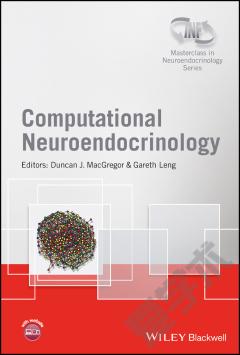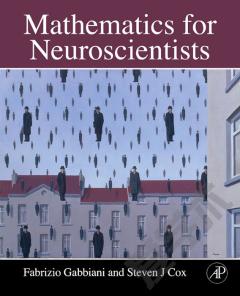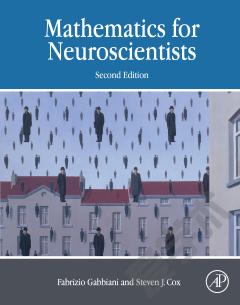Fundamentals of Computational Neuroscience
1.1 WHAT IS COMPUTATIONAL NEUROSCIENCE? 1.2 Domains in Computational Neuroscience 1.3 What is a model? 1.4 Emergence and adaptation 1.5 From exploration to a theory of the brain 1.6 Some notes on the book 2.1 MODELLING BIOLOGICAL NEURONS 2.2 Neurons are specialized cells 2.3 Basic synaptic mechanisms 2.4 The generation of action potentials: Hodgkin-Huxley equations 2.5 Dendritic trees, the propagation of action potentials, and compartmental models 2.6 Above and Beyond the Hodgkin-Huxley neuron: Fatigue, bursting and simplifications 3.1 INTEGRATE-AND-FIRE NEURONS 3.2 The spike-response model 3.3 Spike time variability 3.4 Noise Models for IF neurons 4.1 ORGANIZATIONS OF NEURONAL NETWORKS 4.2 Information transmission in networks 4.3 Population Dynamics: modelling the average behaviour of neurons 4.4 The sigma node 4.5 Networks with non-classical synapses: the sigma-pi node 5.1 HOW NEURONS TALK 5.2 Information theory 5.3 Information in spike trains 5.4 Population coding and decoding 5.5 Distributed representation 6.1 PERCEPTION, FUNCTION REPRESNTATION, AND LOOK-UP TABLES 6.2 The sigma node as perception 6.3 Multi-layer mapping networks 6.4 Learning, generalization and biological interpretations 6.5 Self-organizing network architectures and geentic algorighms 6.6 Mapping networks with context units 6.7 Probabilistic mapping networks 7.1 ASSOCIATIVE MEMORY AND HEBBIAN LEARNING 7.2 An example of learning association 7.3 The biochemical basis of synaptic plasticity 7.4 The temporal structure of Hebbian plasticity: LTP and LTD 7.5 Mathematical formulation of Hebian plasticity 7.6 Weight distributions 7.7 Neuronal response variability, gain control, and scaling 7.8 Features of associators and Hebbian learning 8.1 SHORT-TERM MEMORY AND REVERBERATING NETWORK ACTIVITY 8.2 Long-term memory and auto-associators 8.3 Point attractor networks: The Grossberg-Hopfield model 8.4 The phase diagram and the Grossberg-Hopfield model 8.5 Sparse attractor neural networks 8.6 Chaotic networks: a dynamical systems view 8.7 Biologically more realistic variation of attractor networks 9.1 SPATIAL REPRESENTATIONS AND THE SENSE OF DIRECTIONS 9.2 Learning with continuous pattern representations 9.3 Asymptotic states and the dynamics of neural fields 9.4 Path-integration, Hebbian trace rule, and sequence learning 9.5 Competitive networks and self-organizing maps 10.1 MOTOR LEARNING AND CONTROL 10.2 The delta rule 10.3 Generalized delta rules 10.4 Reward learning 111.1 SYSTEM LEVEL ANATOMY OF THE BRAIN 11.2 Modular mapping networks 11.3 Coupled attractor networks 11.4 Working memory 11.5 Attentive vision 11.6 An interconnecting workspace hypothesis 12.1 INTRODUCTION TO HTE MATLAB PROGRAMMING ENVIRONMENT 12.2 Spiking neurons and numerical integration in MATLAB 12.3 Associators and Hebbian learning 12.4 Recurrent networks and networks dynamics 12.5 Continuous attractor neural networks 12.6 Error-backpropagation network SOME USEFUL MATHEMATICS BASIC PROBABILITY THEORY NUMERICAL INTEGRATION INDEX
{{comment.content}}








 京公网安备 11010802027623号
京公网安备 11010802027623号